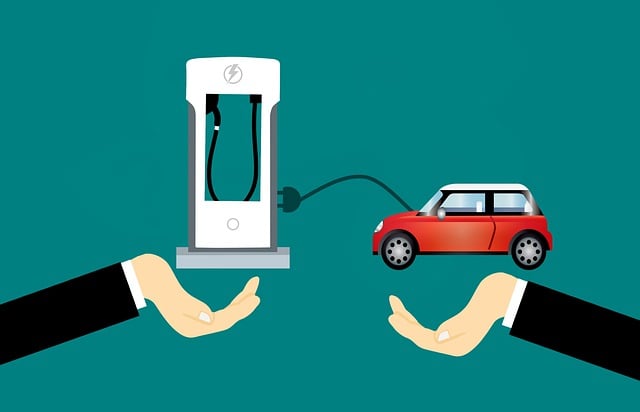The transition towards electric vehicles (EVs) has gained significant momentum in recent years, driven by the need to reduce greenhouse gas emissions and combat climate change. As EVs become increasingly popular, the availability and accessibility of charging infrastructure play a crucial role in the widespread adoption of electric mobility. In this article, we will explore the current status of electric vehicle charging infrastructure and discuss its future outlook.
The Current Status
The current status of electric vehicle charging infrastructure varies across different regions and countries. Some areas have made significant progress in developing a robust charging network, while others are still in the early stages of infrastructure deployment. Overall, the charging infrastructure can be categorized into three main types: residential charging, workplace charging, and public charging.
Residential Charging: Residential charging is the most common and convenient way for EV owners to charge their vehicles. It involves installing a charging station at home, allowing EVs to be charged overnight or during periods of low electricity demand. Residential charging provides EV owners with the flexibility and convenience of having a fully charged vehicle each morning. The installation of residential charging stations is relatively straightforward, requiring a dedicated circuit and a compatible charging unit.

Workplace Charging: Workplace charging stations are becoming increasingly prevalent as employers recognize the benefits of supporting electric vehicle adoption. By providing charging infrastructure at workplaces, employers encourage their employees to switch to electric vehicles, promoting sustainability and reducing emissions. Workplace charging not only extends the range of EVs but also enables employees to charge their vehicles during working hours, minimizing the need for additional charging stops during their commute.
Public Charging: Public charging infrastructure is essential for long-distance travel and for EV owners who do not have access to residential or workplace charging. Public charging stations are typically located at shopping centers, parking lots, and along highways. These charging stations offer various charging speeds, ranging from slower Level 2 chargers to faster DC fast chargers, which can charge an EV battery to 80% in approximately 30 minutes. The availability and distribution of public charging stations continue to expand, providing EV owners with more options for charging their vehicles while on the go.
Despite significant progress, challenges remain in the current charging infrastructure. One major challenge is the lack of standardized charging systems. Different EV manufacturers use different charging connectors and protocols, resulting in a fragmented charging network. However, efforts are underway to establish common charging standards, such as the Combined Charging System (CCS) and CHAdeMO, which aim to provide interoperability and compatibility among different vehicles and charging stations.
The Future Outlook
The future outlook for electric vehicle charging infrastructure is promising, with significant developments and advancements expected in the coming years. Here are some key trends and initiatives that will shape the future of charging infrastructure:

Expansion of Public Charging: The expansion of public charging infrastructure will continue to be a priority, especially in urban areas and along major highways. Governments and private entities are investing in the deployment of fast-charging networks to enable long-distance travel and reduce range anxiety. Additionally, strategic collaborations between automakers, charging station operators, and energy companies are being formed to accelerate the expansion of public charging infrastructure.
Ultra-Fast Charging: The development of ultra-fast charging technologies will significantly reduce charging times, making electric vehicles more convenient and comparable to refueling a conventional vehicle. Companies are investing in technologies such as 350 kW chargers and high-power charging networks, which will allow EVs to be charged in a matter of minutes. These advancements will alleviate concerns about charging time and further enhance the appeal of electric vehicles.
Integration with Renewable Energy Sources: The integration of electric vehicle charging infrastructure with renewable energy sources is a crucial step towards creating a greener and more sustainable transportation ecosystem. By coupling charging stations with solar panels, wind turbines, and energy storage systems, EVs can be charged with clean and renewable energy, further reducing their carbon footprint. This integration also helps to address the intermittency of renewable energy sources by utilizing excess renewable energy for vehicle charging.
Smart Charging and Vehicle-to-Grid Technology: Smart charging solutions and vehicle-to-grid (V2G) technology will play a significant role in optimizing the charging process and managing the grid’s energy demand. Smart charging systems can dynamically adjust charging rates based on electricity prices, grid load, and renewable energy availability, ensuring efficient and cost-effective charging. V2G technology allows electric vehicles to discharge stored energy back to the grid during peak demand periods, providing grid stabilization and additional revenue streams for EV owners.
Integration into Urban Infrastructure: As urbanization continues, the integration of charging infrastructure into existing urban infrastructure will become more important. Streetlight charging stations, curbside charging points, and charging facilities at parking garages and transit hubs will become more prevalent, catering to the growing number of EV owners in urban areas. This integration will enhance the convenience and accessibility of charging for city dwellers, encouraging more individuals to switch to electric vehicles.
In conclusion, the current status of electric vehicle charging infrastructure shows promising developments, with various types of charging stations available for residential, workplace, and public use. The future outlook for charging infrastructure is even more exciting, with an emphasis on expanding public charging, ultra-fast charging technologies, integration with renewable energy, smart charging solutions, and integration into urban infrastructure. These advancements will drive the wider adoption of electric vehicles, providing a cleaner and more sustainable transportation system for the future.
